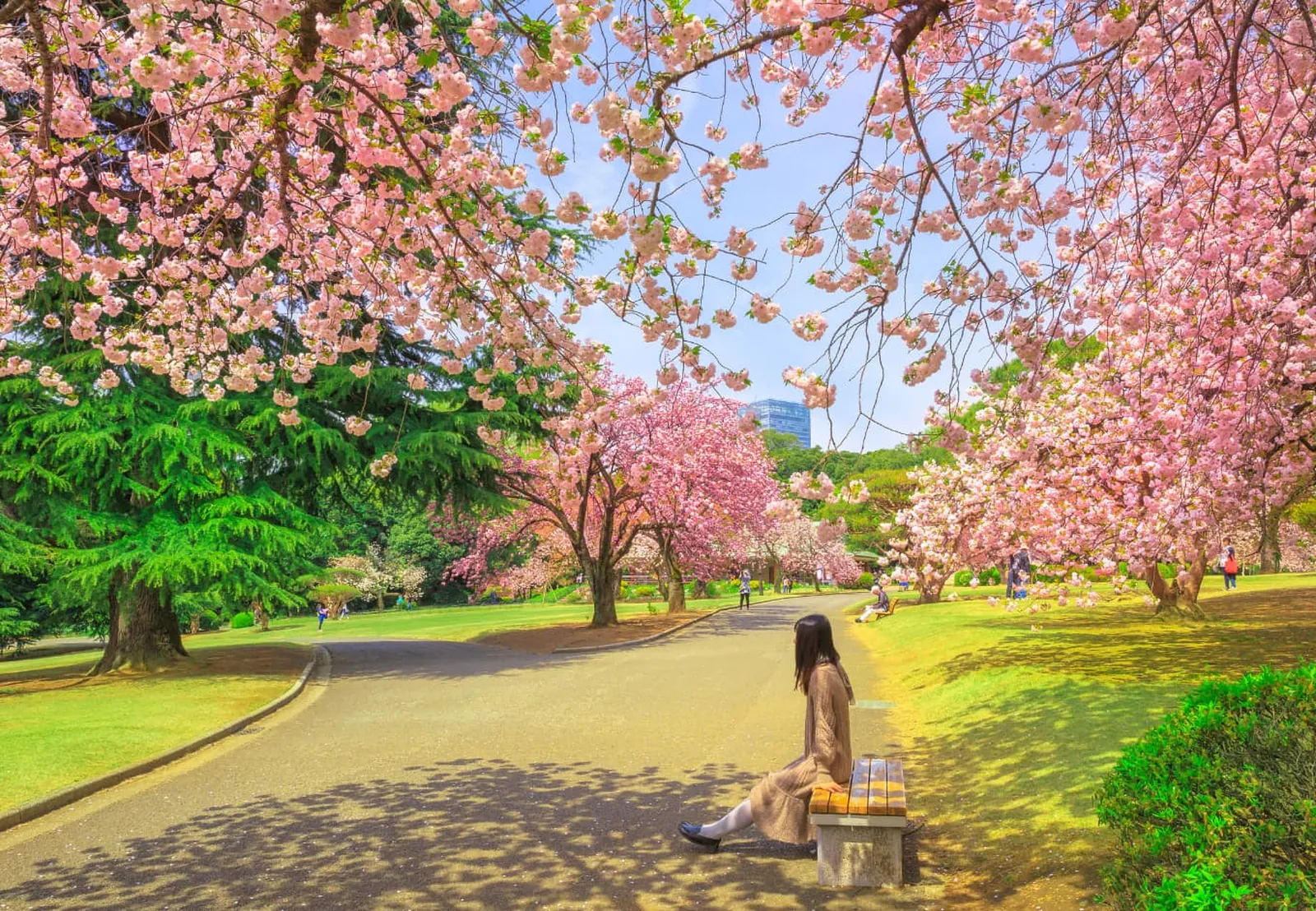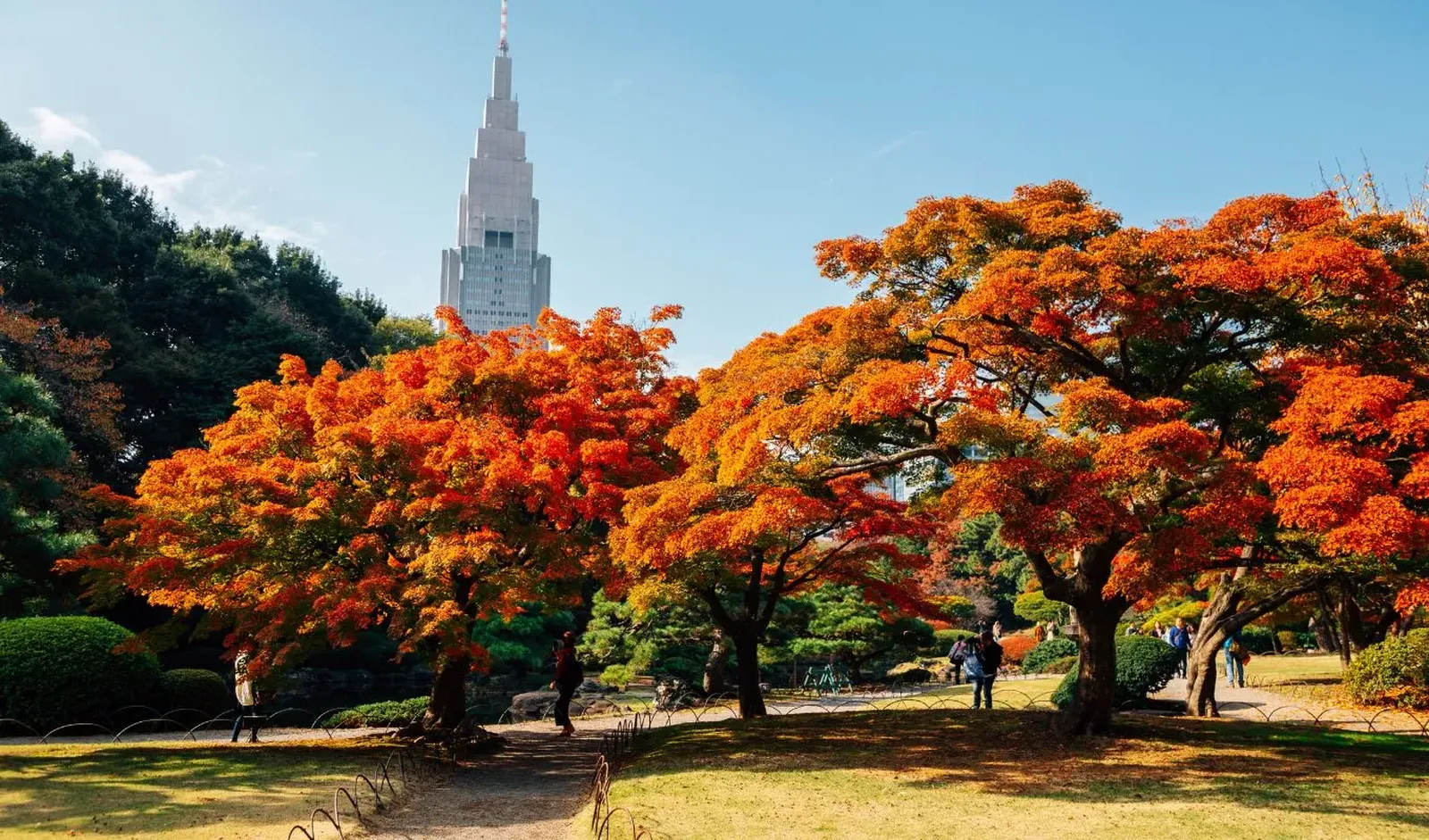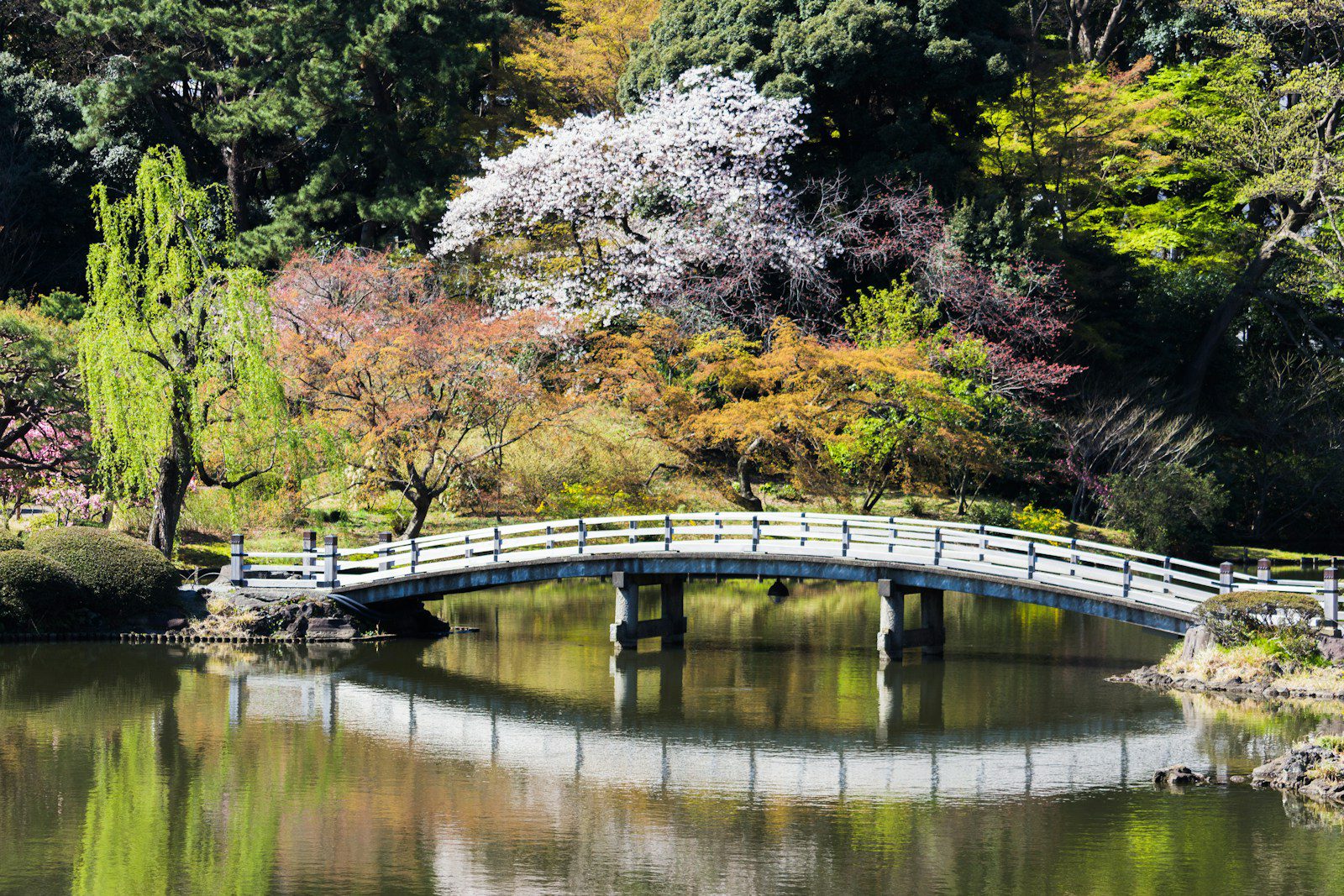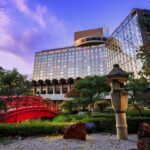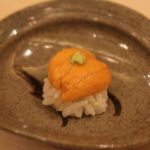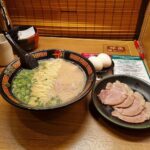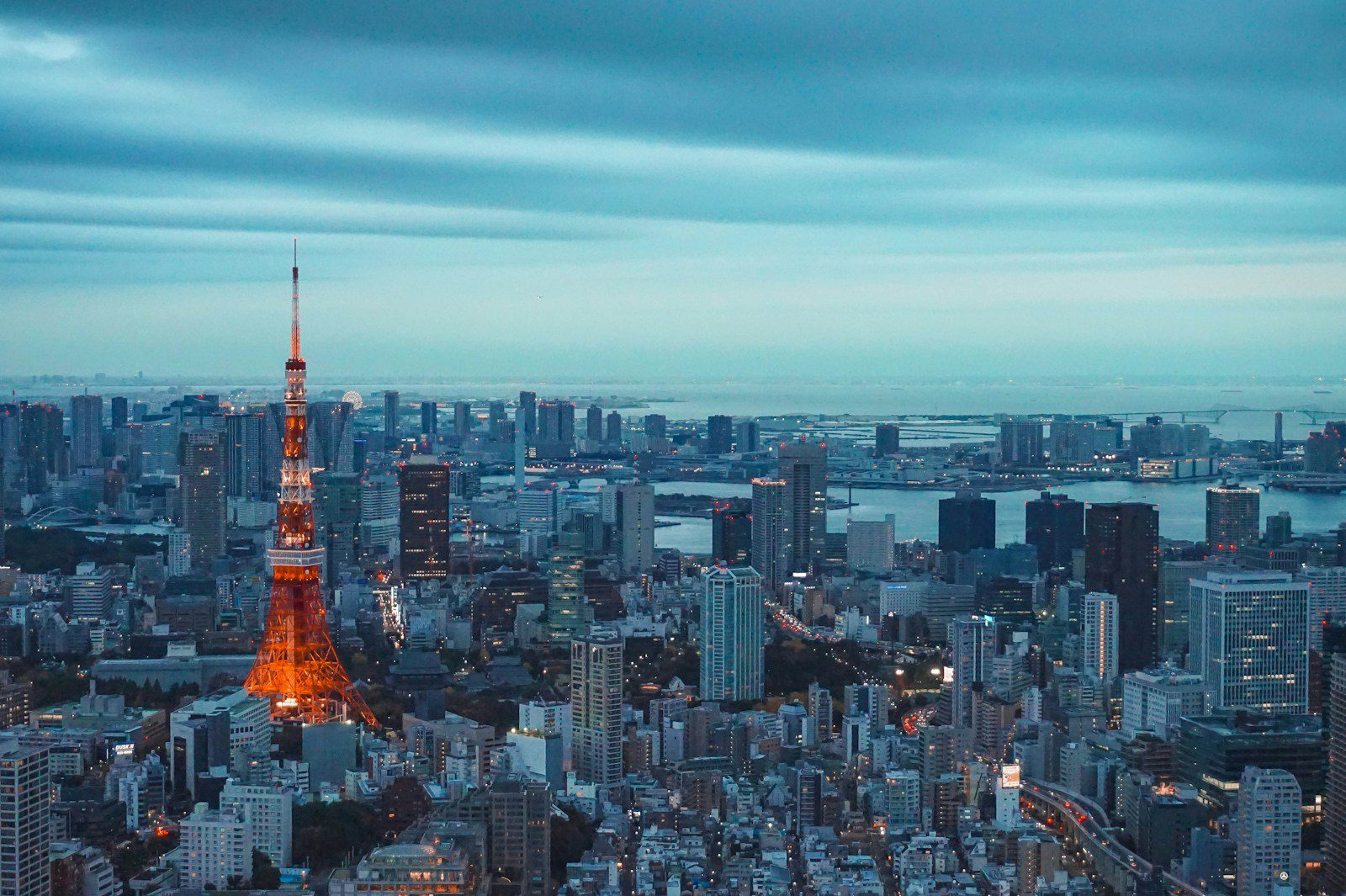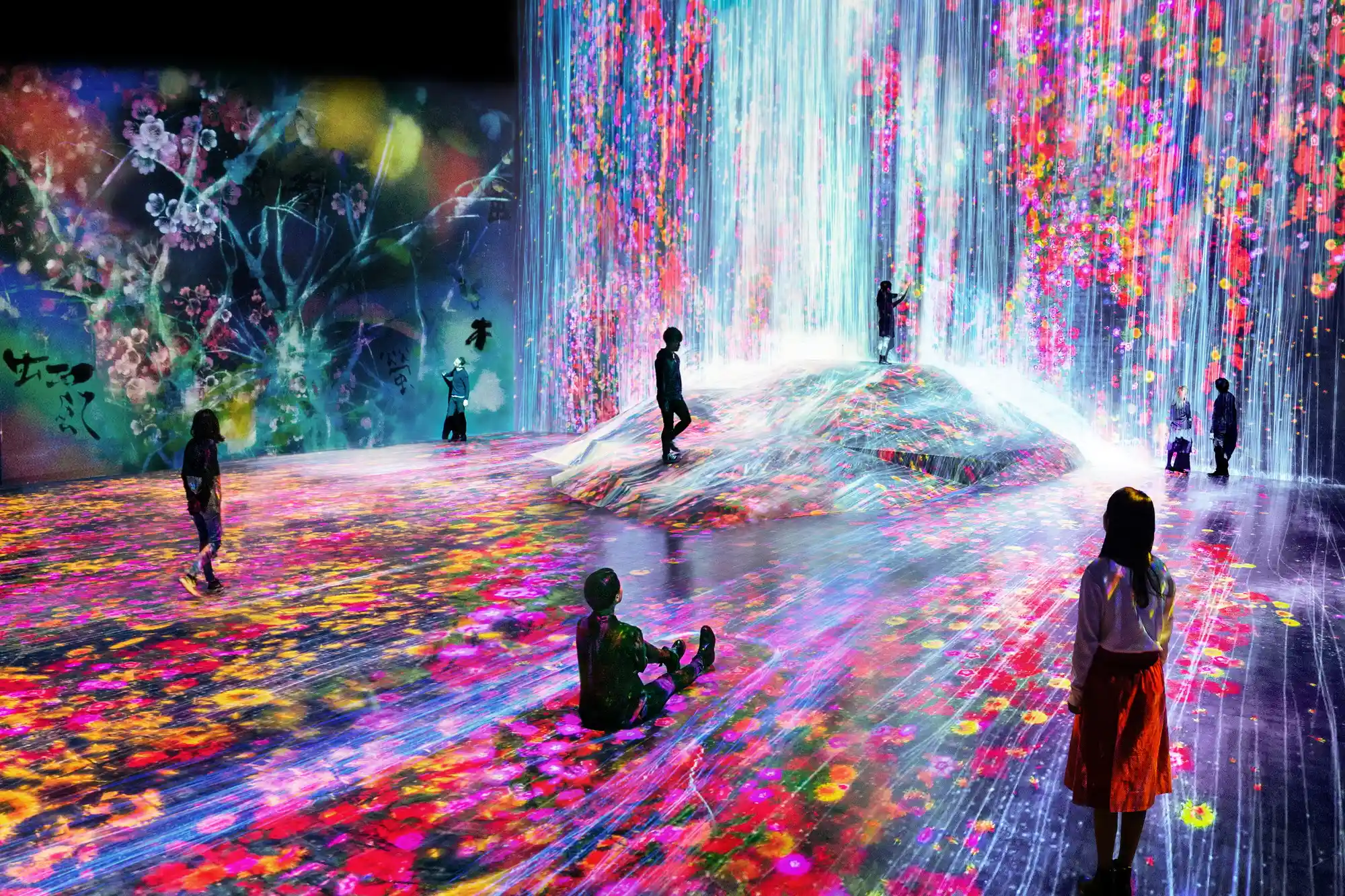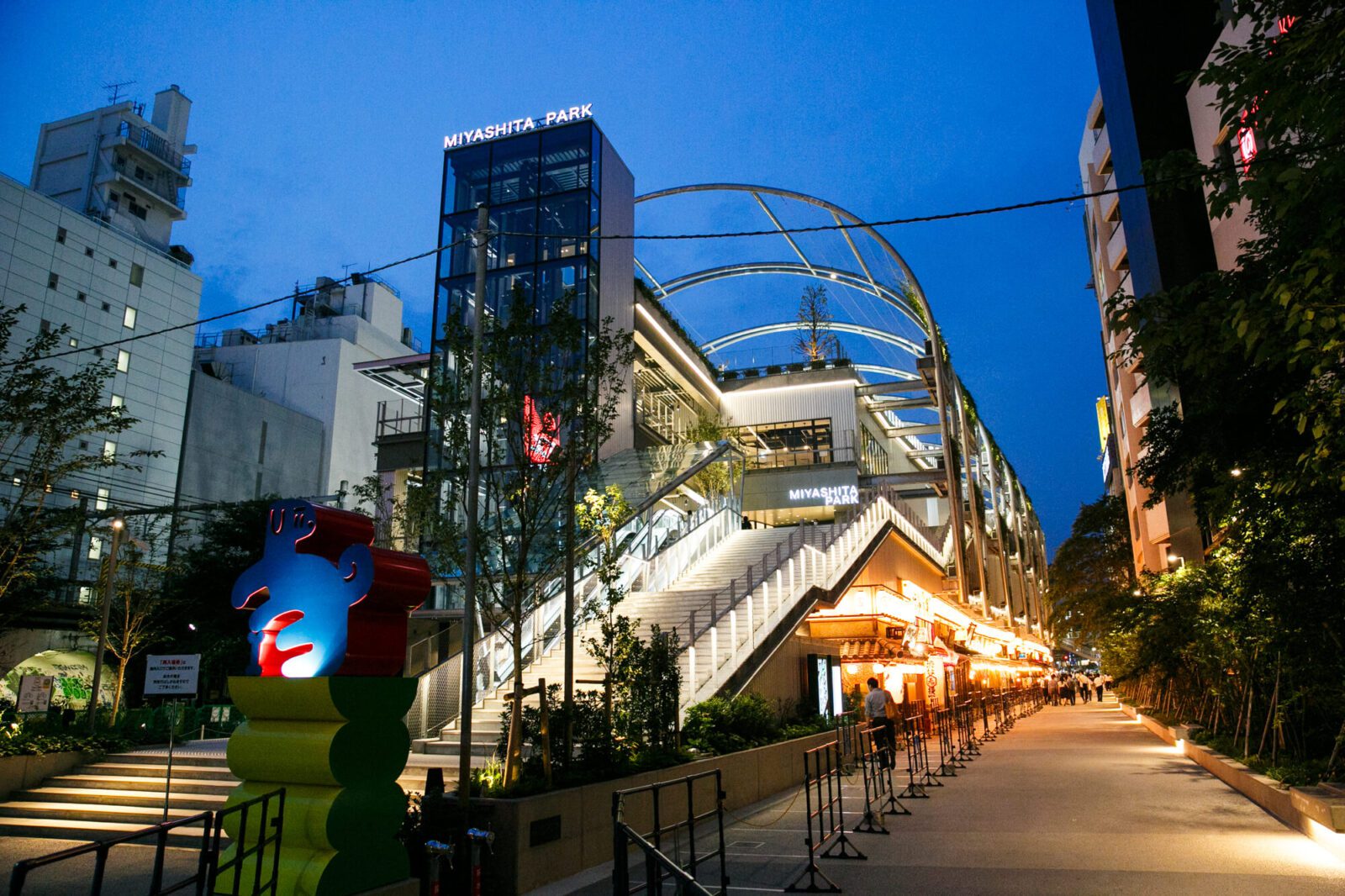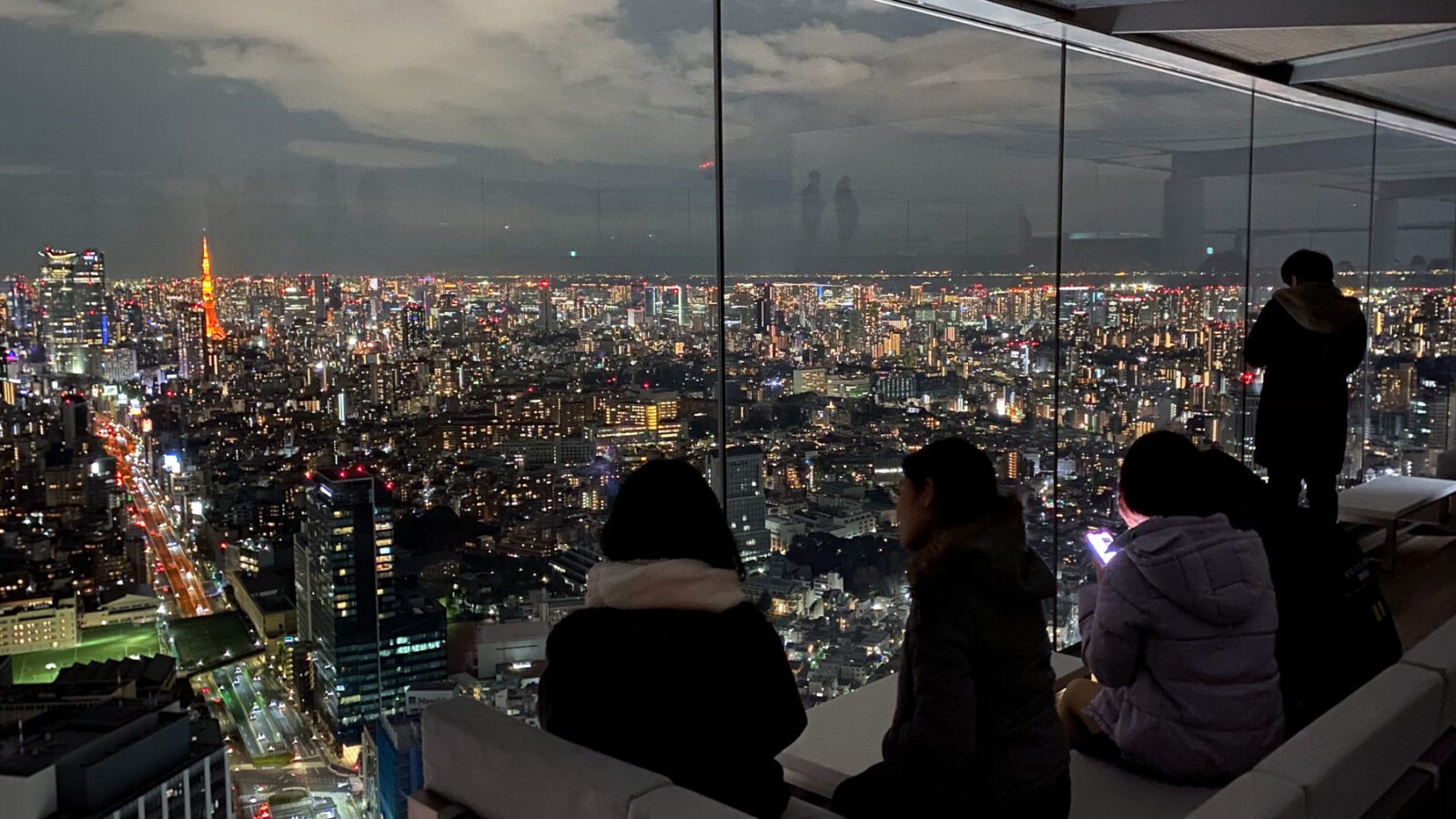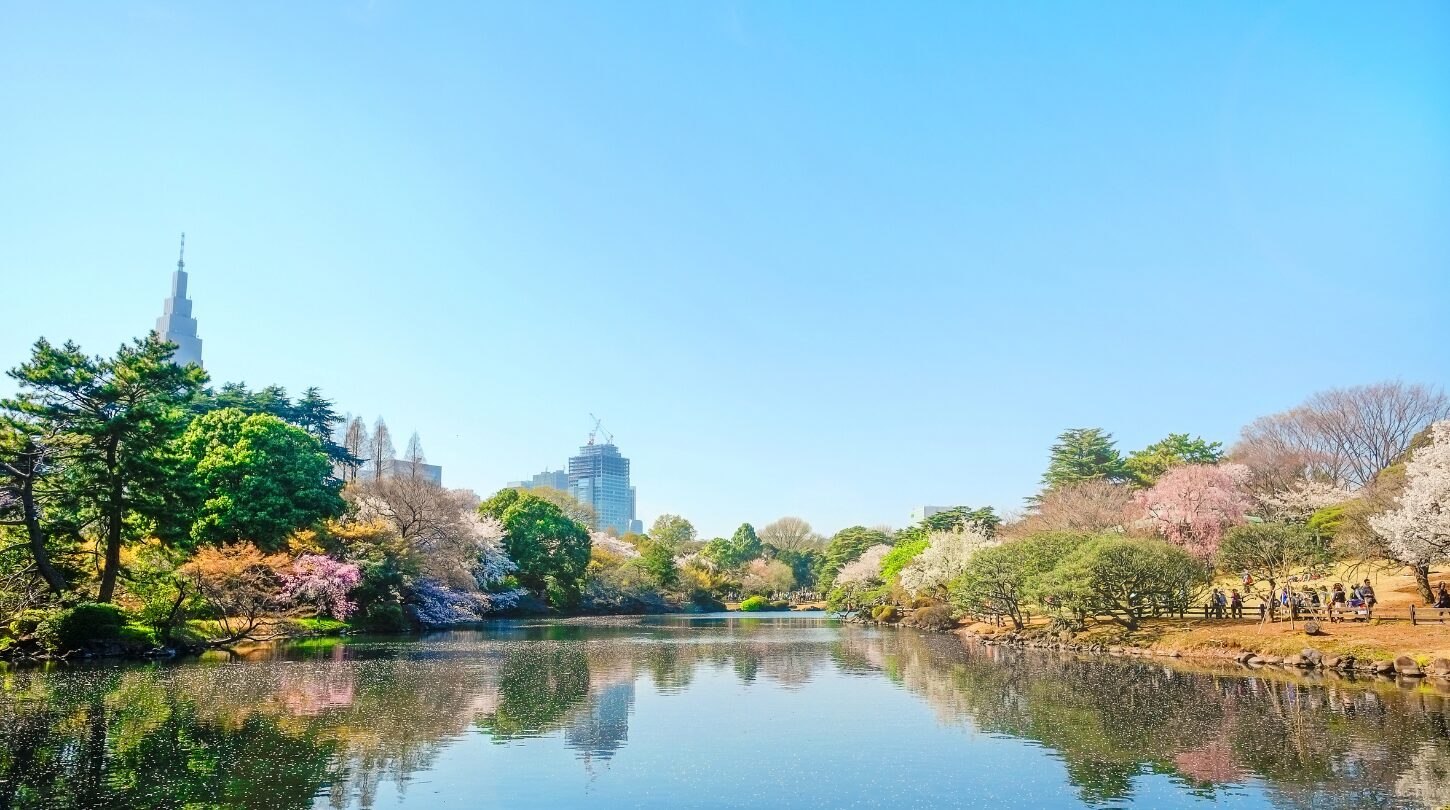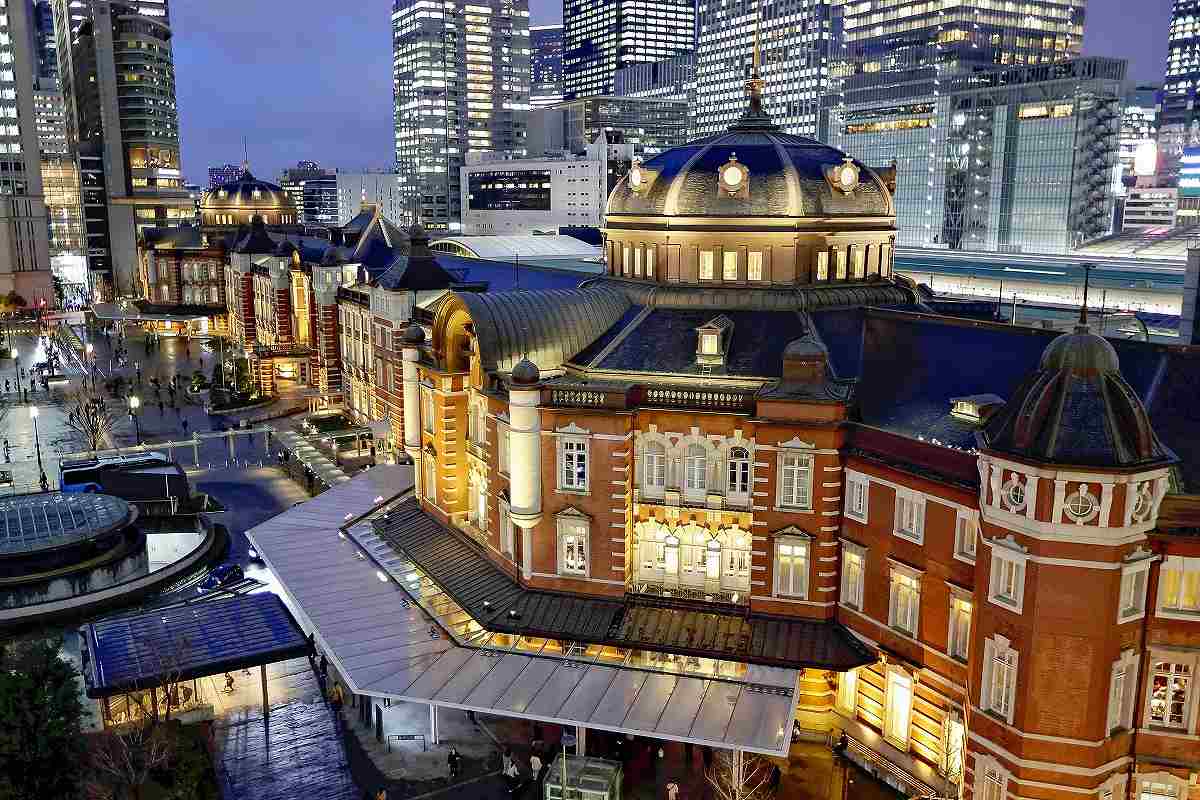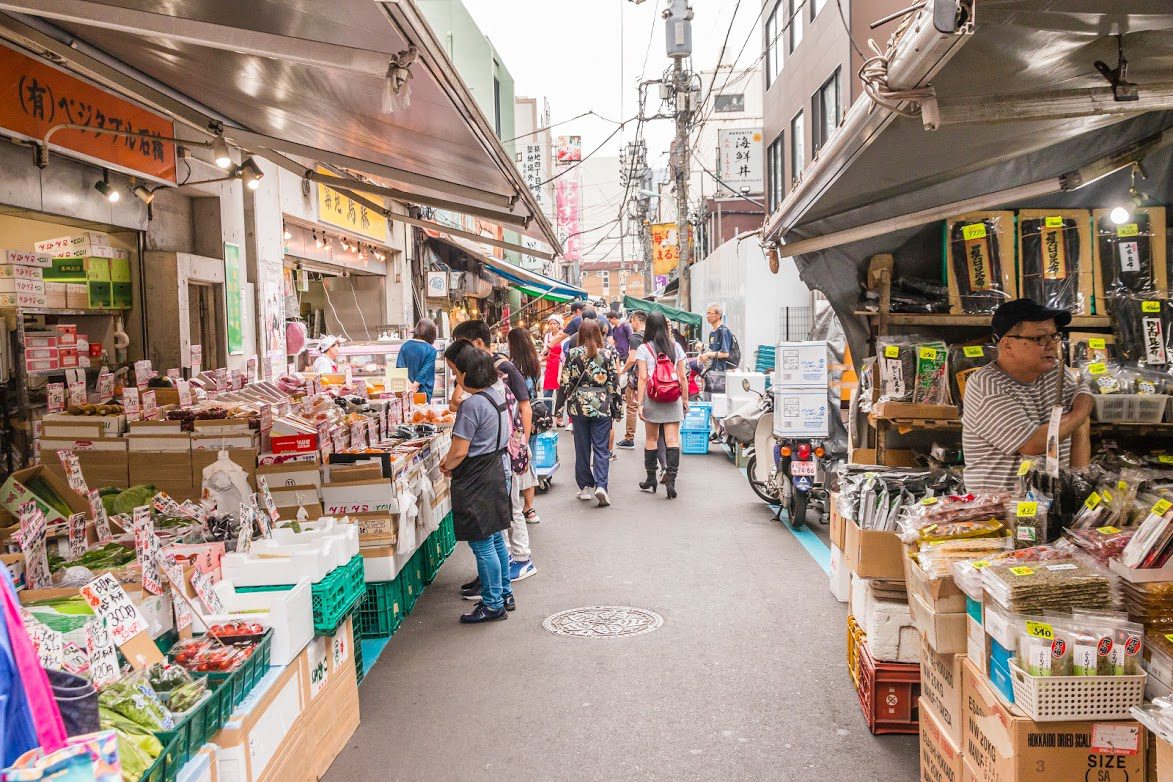Shinjuku Gyoen National Garden
A well-known city park in Tokyo that combines three different garden styles: Japanese traditional, formal, and English landscape.
Overview
Shinjuku Gyoen National Garden is a large park located in Tokyo. The 144-acre garden features a variety of landscapes, including traditional Japanese gardens, a formal French garden, and an English-style lawn.
The park has serene ponds, winding paths, and a greenhouse, showcasing nature’s beauty throughout the year.
Visitors can enjoy strolling under cherry blossoms in spring or viewing autumn leaves. The park offers a peaceful escape from the city, suitable for picnics, leisurely walks, or relaxation. With over 40,000 reviews and a 4.6 rating, Shinjuku Gyoen is a popular destination.
Visit Shinjuku Gyoen National Garden – In the heart of one of the world’s busiest cities lies an oasis of calm that feels like stepping into another world.
Shinjuku Gyoen National Garden stands as a testament to Japan’s masterful balance of nature and urban life.
With an impressive 4.6/5 rating from over 40,000 visitors, this 144-acre former estate offers a refreshing escape from Tokyo’s energetic pace.
Shinjuku Gyoen National Garden: A Garden for All Seasons
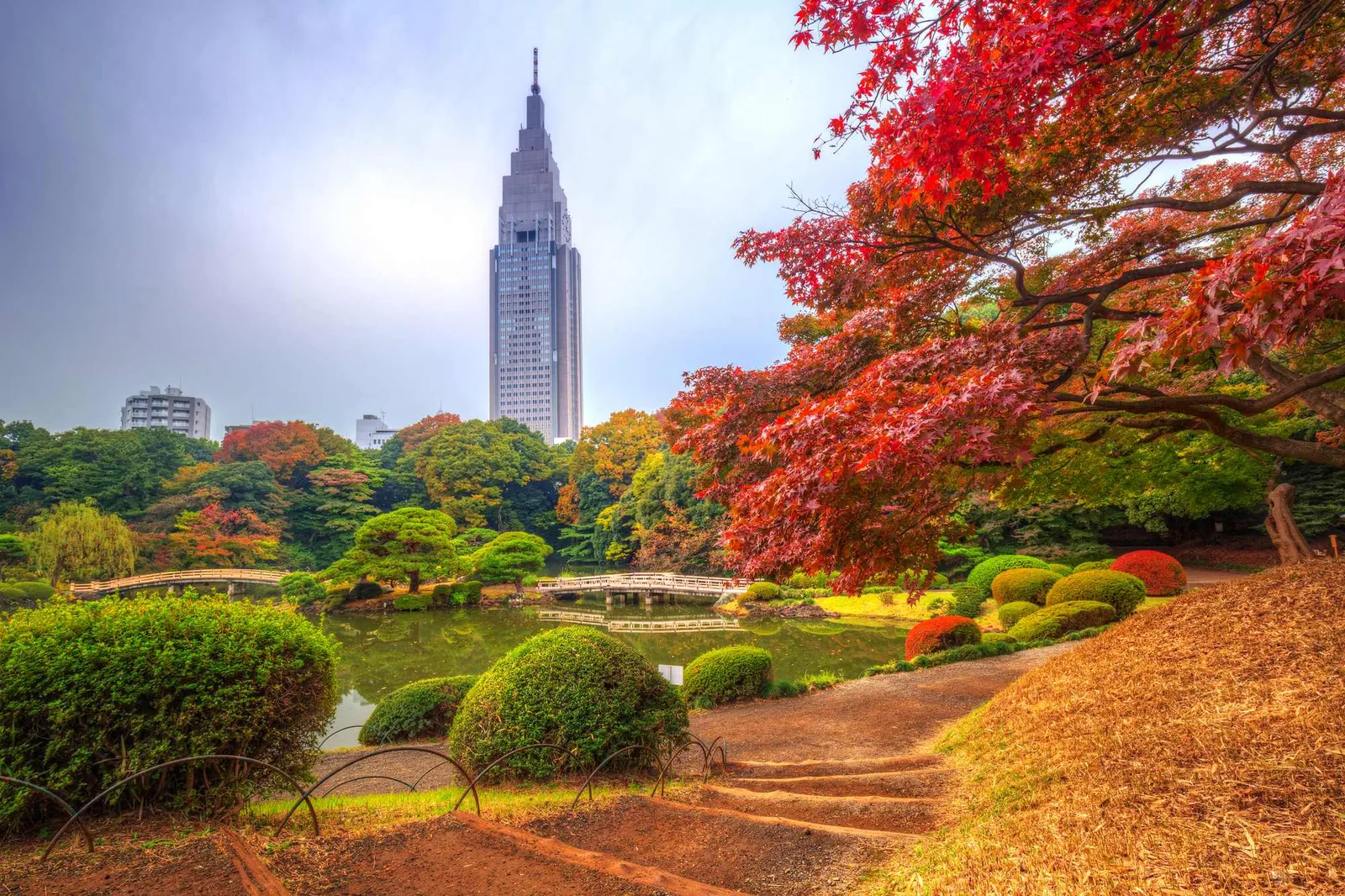
Shinjuku Gyoen isn’t just one garden—it’s many gardens in one magnificent space. During our visit, we were struck by how this single location manages to showcase such diverse landscaping traditions.
Japanese Traditional Garden
The traditional Japanese garden section transported us to another era. Stone pathways wind around serene ponds where koi fish swim lazily beneath ornate bridges.
The careful arrangement of rocks, water, and plants creates those picture-perfect scenes that Japan is famous for.
Wooden pavilions offer quiet spots to sit and take in views that change dramatically with each season. The garden’s designers understood something profound about beauty—sometimes it’s what you leave out that matters most.
French Formal Garden
Just a short walk away, the landscape transforms completely. The French formal garden section presents perfectly manicured lawns and symmetrical flower beds that show a completely different approach to natural beauty.
We found ourselves admiring the precision of the design, with its clean lines and geometric patterns. The contrast between this style and the Japanese garden nearby highlights the cultural exchange that shaped Shinjuku Gyoen’s history.
English Landscape Garden
The English landscape section feels surprisingly natural despite being just as carefully designed as the other areas. Rolling hills and winding paths create a sense of discovery as you walk through groves of beautiful trees collected from around the world.
This section is particularly pretty in spring, when cherry blossoms create pink clouds above green lawns where families spread out picnic blankets.
Seasonal Splendors of Shinjuku Gyoen
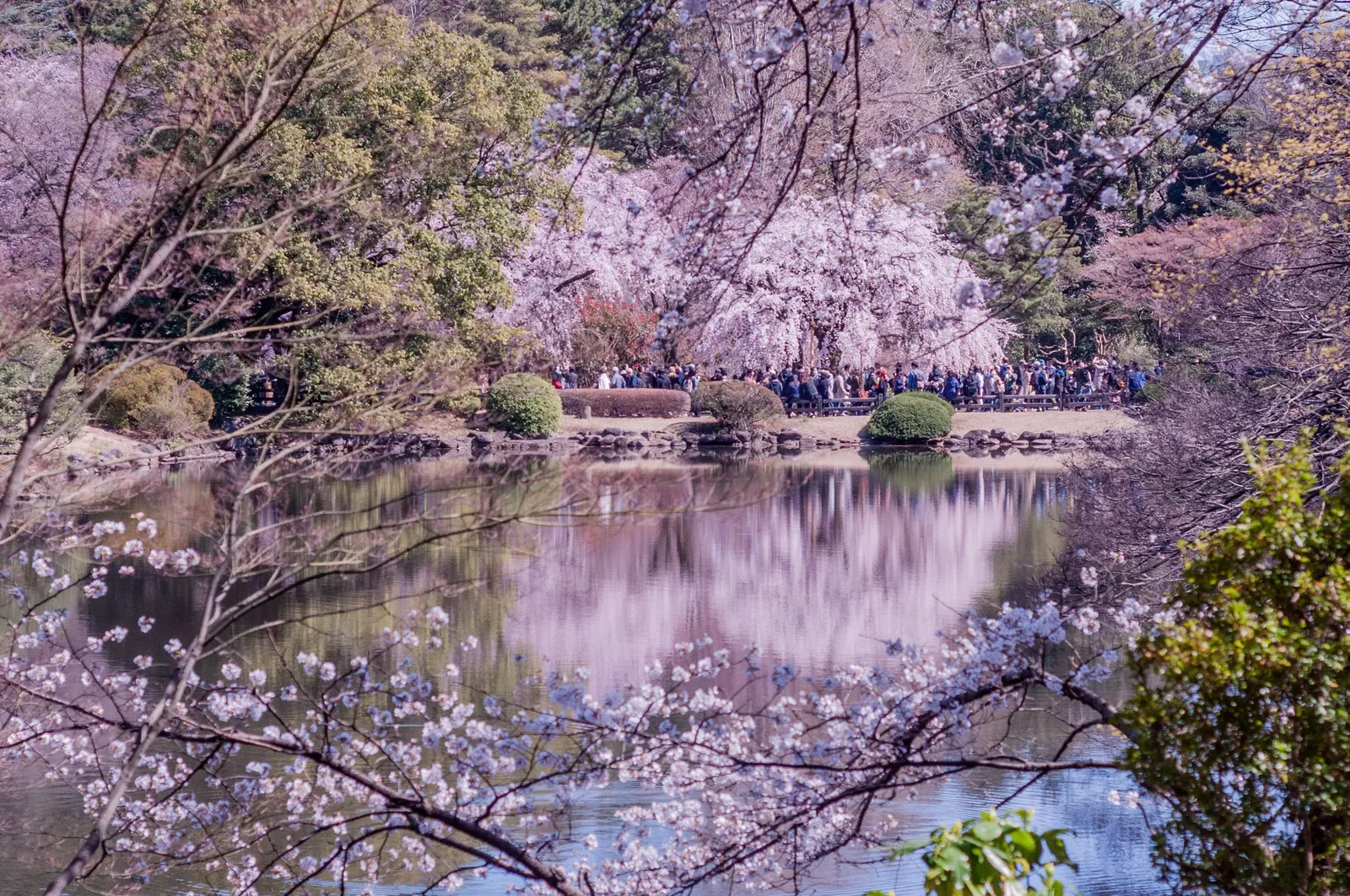
One of the most wonderful aspects of Shinjuku Gyoen is how dramatically it changes throughout the year. Each season brings its own special charm to the garden.
Spring: Cherry Blossom Paradise
When spring arrives in Tokyo, Shinjuku Gyoen becomes one of the best spots in the city to experience hanami (cherry blossom viewing). With over a dozen varieties of cherry trees, the blooming season extends longer here than in many other parks.
We timed our visit for late March and weren’t disappointed. Pale pink blossoms created a magical canopy overhead while people chatted quietly on blankets below. The garden’s spaciousness means that even during this popular season, you can find your own peaceful spot.
Summer: Lush Green Retreats
Summer transforms Shinjuku Gyoen into a welcome escape from Tokyo’s heat. Dense tree cover provides natural air conditioning, and the wide lawns invite visitors to slow down and relax.
The greenhouse becomes especially interesting during summer months, housing tropical plants that thrive in the warmth. We spent nearly an hour exploring its collection of rare plants from around the world.
Autumn: Fiery Foliage
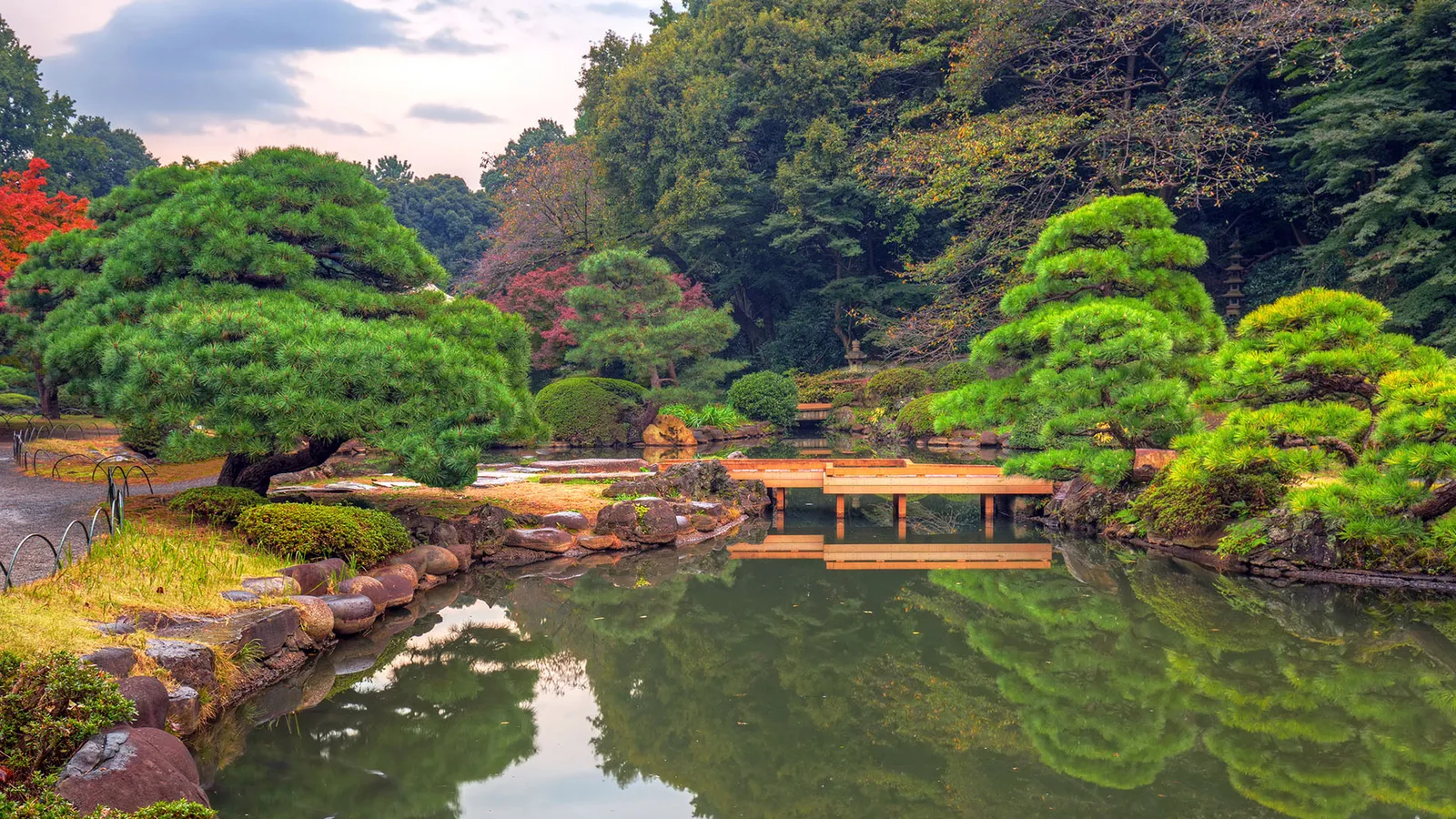
Fall brings a spectacular color show to Shinjuku Gyoen. Japanese maples and ginkgo trees turn brilliant shades of red, orange, and gold. The reflection of autumn leaves in the garden’s ponds doubles the visual impact.
The pleasant temperatures of fall make it an ideal time for longer visits, and photographers flock here to capture the seasonal beauty.
Winter: Quiet Contemplation
Winter offers a different kind of beauty. Without leaves to block views, the garden’s architectural elements become more prominent. Plum blossoms appear as early as February, bringing the first hints of the coming spring.
Even in the coldest months, the greenhouse provides a warm retreat filled with greenery and flowers.
Practical Information for Your Visit to Shinjuku Gyoen National Garden
Planning your visit to Shinjuku Gyoen takes just a little preparation. The garden is open daily from 9 AM to 5:30 PM, making it accessible whether you’re an early bird or prefer afternoon outings.
Getting There and Entry
Located at 11 Naitomachi in Shinjuku City, the garden is easily accessible from several Tokyo subway stations. We found the Shinjuku-gyoenmae Station on the Marunouchi Line to be the most convenient entry point.
There’s a modest entry fee that helps maintain the grounds—absolutely worth it for the experience you’ll have. Bring cash as credit cards aren’t always accepted for admission.
Facilities and Accessibility
Shinjuku Gyoen is thoughtfully designed for visitors of all abilities. Wheelchair accessible entrances and pathways make much of the garden navigable for everyone. Public restrooms are clean and plentiful throughout the grounds.
For families, the playground areas provide kids with space to play, and many of the walking paths are suitable for children of all ages. On-site parking is available, though limited, so public transportation remains the easier option.
Food and Refreshments
Several tea houses within the garden offer traditional Japanese refreshments. We stopped at one near the Japanese garden section for matcha tea and seasonal sweets—a perfect afternoon break.
You’re also welcome to bring your own food for a picnic on the lawns. Just remember to take all trash with you when you leave, as the garden maintains very high standards of cleanliness.
Photography Tips for Shinjuku Gyoen
If you’re hoping to capture the beauty of Shinjuku Gyoen, we have a few suggestions from our own experience.
Best Photo Spots
The Japanese garden’s bridges and ponds offer classic compositions, especially early in the morning when the light is soft and the water is still.
For wider landscape shots, the open lawns with Tokyo’s skyline in the background create a striking contrast between nature and city.
The greenhouse provides opportunities for close-up plant photography regardless of weather or season.
Timing Your Shots
Early morning visits reward photographers with gentle light and fewer people. We arrived just after opening time and had many areas nearly to ourselves for the first hour.
Late afternoon light creates a golden glow across the French formal garden section that’s particularly photogenic.
Connecting with Nature in the City
What makes Shinjuku Gyoen so special isn’t just its beauty—it’s the function it serves in urban life. In a city where space comes at a premium, this garden offers room to breathe.
A Living Museum of Plants
The garden houses numerous rare and historic trees, some over a century old. Walking among them connects visitors to Tokyo’s past in a tangible way.
The greenhouse collection expands the experience, showcasing plant species from tropical climates that wouldn’t survive in Tokyo’s natural environment.
Seasonal Events and Activities
Throughout the year, Shinjuku Gyoen hosts various cultural events tied to the seasons. Traditional tea ceremonies, botanical exhibitions, and seasonal festivals add another dimension to visits.
Checking the Shinjuku Gyoen National Garden’s official website before your trip might reveal special activities happening during your stay in Tokyo.
Attraction Types
Related Tours
Powered by
Things to Know
- Onsite services
- Wheelchair accessible entrance
- Wheelchair accessible parking lot
- Hiking
- Public restroom
- Good for kids
- Kid-friendly hikes
- On-site parking
Our Notes & Verdicts
Our Rating: 4.8
We absolutely adored our visit to Shinjuku Gyoen National Garden, where the blend of traditional Japanese charm and international garden styles left us in awe. Wandering through the meticulously curated landscapes, we felt a profound sense of calm, a rare treat in bustling Tokyo.
The cherry blossoms in spring were a highlight, painting our day with delicate pink hues, while the affordable entry fee made it accessible for us to return.
With a personal rating of 4.8, we can’t recommend this tranquil haven enough for anyone seeking a moment of peace or a scenic stroll with loved ones.
🏨 Related Accommodations
-
The Ritz-Carlton, Tokyo
Tokyo Midtown 9-7-1 Akasaka Minato-ku, Tokyo 107-6245, Japan
-
Hotel New Otani Tokyo Executive House Zen
4-1 Kioi-Cho, Tokyo 102-8578, Japan
-
Conrad Tokyo
1-9-1 Higashi-Shinbashi, Minato-ku, Tokyo 105-7337, Japan
-
Palace Hotel Tokyo
1-1-1 Marunouchi, Tokyo 100-0005, Japan
-
The Peninsula Tokyo
1-8-1 Yurakucho, Tokyo 100-0006, Japan
Not sure which hotel to select? Try these hotel search engines below
🍽️ Related Restaurants
-
Sushi Saito
1-4-5 1F Ark Hills South Tower, Roppongi, Minato 107-0052 Tokyo Prefecture
Japanese, Seafood
-
-
-
Sushizanmai Tsukijiekimae-Ten
3-11-9 Tsukiji Square bldg1F, Tsukiji, Chuo 104-0045 Tokyo Prefecture
Sushi, Healthy
-
Operating Hours
Location
Nearest Train Station(s)
Shinjuku Station, Sendagaya Station, and Shinjuku-Gyoemmae Station
Nearest Bus Stop(s)
Shinjuku-Nichome, Shinjuku-Yonchome, and Shinjuku-Isetan
Tokyo Trip Add-Ons
Equip yourself for the ultimate Tokyo adventure with the following add-ons, curated just for you.
Frequently Asked Questions (FAQs)
Oh, without a doubt, you absolutely must visit Shinjuku Gyoen! It’s like stepping into another world, leaving the crazy, exciting city behind! Imagine wandering through meticulously designed gardens, each with its own distinct vibe-Japanese traditional, formal French, and English landscape styles all coexisting in perfect harmony. It’s a sensory overload in the best way possible, and we guarantee you’ll leave feeling refreshed and inspired!
Well, first off, it’s a seriously beautiful and expansive oasis right in the heart of bustling Shinjuku, covering a massive 144 acres! But more than that, it’s famous because it seamlessly blends those three distinct garden styles-Japanese, English, and French-into one incredible experience. Plus, it was once an imperial garden, so you know it’s got some history and elegance! You can even spot locations from “The Garden of Words” anime if you’re a fan!
Okay, so Shinjuku Gyoen is pretty darn big, clocking in at just under 60 hectares. You could easily spend an entire afternoon just wandering! We’d say budget at least two to three hours to really soak it all in, explore each garden, and maybe even chill out with a snack by one of the ponds. Time flies when you’re surrounded by such beauty, you know?
Yep, there’s an entrance fee, but it’s totally worth it! It’s only a few hundred yen (think a few bucks), which is a steal for the tranquility and beauty you’re about to experience. Consider it an investment in your sanity amidst the Tokyo hustle, and remember, it’s way cheaper than therapy!
Disclaimer
While we at Tokyo Trip Guide do our best to show you accurate prices, we just can't promise they'll stay the same. Here's why: since we're not actually selling anything ourselves - we work with partner companies who set their own prices - we can't control what deals they offer. That's why it's best to check directly with our suggested deal providers to see their latest prices for attraction tickets.
Just so you know, if you end up buying something from the providers we list here, we might get a small commission. We'd be really happy if you used our recommended links to make your bookings!

